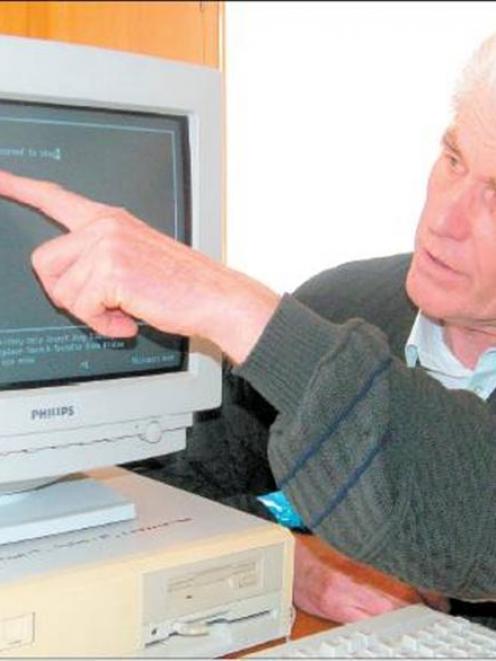
Mr Bain was found not guilty of the murder of his parents and three siblings by a High Court jury in Christchurch on June 5.
For Philip Tomlinson, a former head of information technology at Aoraki Polytechnic and a private mathematics and statistics tutor, the story began in August 2002, when Joe Karam appeared on his doorstep.
Mr Karam told him that a full re-hearing of the case had been scheduled for the Court of Appeal later in the year, and that he was looking for someone with Mr Tomlinson's expertise.
Mr Tomlinson said Mr Karam asked him to research the critical issue of the timing of the switching on of the Bain family computer.
‘‘He said ‘I'm not asking you to believe that David Bain is either guilty or innocent, I just want you to do some research. I don't mind what angle you take, I just want you to get at the truth'.''
Although he had done occasional consultancy work as a mathematician on other legal cases, Mr Tomlinson still does not know how Mr Karam heard of him, and has never bothered to ask.
Mr Tomlinson said Mr Karam told him he had no money to pay for his time, and asked him to work for nothing, ‘‘out of compassion for David Bain''.
‘‘I didn't want to do it, but I felt I couldn't refuse someone who so earnestly, passionately believed that David Bain was innocent,'' Mr Tomlinson said.
So he obtained the relevant police material and began two months of intensive work, using what he called ‘‘interval analysis'' to create a timeline for when the computer was switched on, and how long it took to start up.
These parameters were set alongside the timings of other events within a brief period early on that June 20, 1994 morning.
His conclusion was there was at least one minute and 20 seconds between the latest time the computer could have been switched on, and the earliest time David Bain could have arrived outside the gate to the house after his paper run.
He said this conclusion meant it was ‘‘impossible'' that David Bain switched on the computer and typed the incriminating message: ‘‘Sorry you are the only one who deserved to stay''.
The message is thought to have been typed by whoever committed the murders.
In October of that year, Mr Tomlinson appeared as an expert witness before the Court of Appeal, where he was cross-examined for an hour by the deputy crown prosecutor.
He said he was shocked at the ruling of the court's three judges that the entirety of new evidence presented by the defence team would not have changed the jury's verdict in the original 1995 trial that found Mr Bain guilty of the murders.
Mr Tomlinson's timeline was also part of the defence team's submission to the full Privy Council hearing in 2007 that quashed Mr Bain's convictions, and stated there had been a substantial miscarriage of justice.
The resulting retrial, which began in March, was the reason for Mr Tomlinson's reengagement by the defence team.
Mr Karam called him late last year and asked him to do further work, along with Christchurch-based statistician and software engineer Dr Bryan Thomas, on further and more clearly clarifying when the Bain computer was switched on.
Until mid-May, the pair took different approaches.
Dr Thomas working on identifying the temporary file from the Bain computer containing the crucial ‘‘time stamp'' that showed when the computer was switched on.
Mr Tomlinson embarked on the time-consuming task of building a working replica of the Bain household computer.
After making dozens of phone calls, he received a copy of the long-obsolete software from the United States, and was given suitable hardware rescued from a rubbish skip in Timaru.
Building the model ‘‘crystallised and solidified'' his previous work, and made the pair's conclusions incontestable, he said.
During the retrial, on May 13, Mr Tomlinson was standing outside the High Court with briefcase in hand, ready to appear.
However, the cross examination of an expert witness for the prosecution, Martin Cox, greatly reduced a crucial point of contention for the defence team, so in the end, Mr Tomlinson was not needed.
His colleague Dr Thomas made a brief appearance the same day that covered the pair's position.
Mr Tomlinson believed his work had its greatest impact during the Court of Appeal hearing in 2002, and the full Privy Council hearing in 2007.
He characterised his work for the defence team over the past seven years as that of a ‘‘technocrat''. The question of whether David Bain was guilty or not ‘‘was outside of my portfolio''.
He viewed the murders and their aftermath as not only a tragedy for the Bain family, but one for New Zealand as a whole.
‘‘It is unfortunate that the story has unavoidably become a form of public entertainment.''
The retrial had been a ‘‘completely unnecessary fiasco'' that could be attributed to New Zealand's adversorial legal system.
‘‘It is not a search for the truth, it is a search for a win, and I find that disquieting.''
However, his role with the Bain defence team had offered him an enlightening inside picture of how New Zealand's legal machinery turned over, and gave him an opportunity to use his expertise to reduce a complex issue into a form that a jury could understand.
‘‘I have spent my whole lifetime simplifying complexity.''
